Trans Africa - UK to Kenya 32 Weeks - Itinerary
On this trip we are schedule to visit or pass through 27 countries
Gibraltar, Spain, Morocco, Mauritania, Senegal, Mali, Ivory Coast, Ghana, Togo, Benin, Nigeria, Cameroon, Gabon, Republic of Congo, Cabinda, Angola, Namibia, South Africa, Lesotho, Eswatini, Mozambique, Botswana, Zimbabwe, Zambia, Malawi, Tanzania, Kenya
As we will be camping and travelling for an extended period of time, you must be prepared for an adventurous challenge. It can be hot and dusty, and will sometimes be out of contact from the rest of the world. This means no telephones, shops or any other mod cons. We need you to participate and work with all members of the expedition. For the Trans we use sturdy purpose-built vehicles for these rugged off-road conditions.
Due to the nature of the trip, Trans Africa tours do not have a specific day-to-day itinerary.
Week 1-4: Europe, Morocco
We start the trip at Gibraltar or Morocco. Crossing the straits of Gibraltar to Morocco, we visit the coastal capital city of Rabat and visit Casablanca. Meknes, on the high plains is of the many ancient walled cities with covered markets and a labyrinth of narrow winding streets. We visit the ancient Roman ruin of Volubilis, followed by Fes, Marrakech and the Atlas Mountains.
Week 5: Mauritania
We pass into the Sahara Desert and follow the Atlantic Coast - it is never forgotten; oases with cool water surrounded by palms, stretches of sand as big as a small country, old forts, camel trains following centuries old trading routes, and a night sky undiluted by city lights. We are touching on the western fringes of the Sahara Desert here - an enormous desert which, incredibly, is the size of the United States We go miles off road, sometimes digging the truck out of the soft sands to get through. - and have to contend with sand dunes, salt pans and mud flats before crossing over the Senegal River to Senegal.
Week 6-8: Senegal, Mali, Ivory Coast
We enter the Sahel; the vast semi arid desert that separates the Sahara from the forests of black Africa and cross the Senegal River into Senegal. We reach St Louis on the coast and the capital Dakar with its great night clubs.
We follow the border of Gambia to the west of Senegal and head south; down the road less travelled to the mountainous Guinea and Cote d’Ivoire. Ivory Coast and the magnificent Basilica of Our Lady of Peace in Yamoussoukro, modeled on St Peters Basilica in the Vatican. Then to Abidjan, with an impressive skyline of high rise buildings, and oceans where we can camp on the beach.
Week 9-10 Ghana
Both routes meet in Ghana being the first English-speaking country Ghana, is a particular favourite, the people are so warm and hospitable - lots of fantastic seafood too! The tree-top canopy walks of the Kakum Forest Reserve and widely available drumming lessons are now a firmly established. We cross the jungle to the beaches of the Gold Coast and visit the slaving forts.
Week 11-12: Togo, Benin, Nigeria, Cameroon
Togo and Benin are only fifty miles wide. Here the religion is the African tradition of Voodoo. On Nakoue Lagoon you can take canoes to visit the fishing village of Ganvie. We enjoy the huge bustling markets and visits to the stilted village-in-a-lake built high above the water on bamboo poles, and the fetish market in Lome (home of voodoo). There are mud fortresses in the north to the home of voodoo, Togo and Benin, despite being tiny countries have a lot to offer.
Nigeria is the most populous country in Africa, with 225 million people. With its often dubious reputation, Nigeria will be one of the countries that surprises you the most. The people are dynamic, clever and fun, and very welcoming of tourists.
Depending on our route through Nigeria you may have the chance to visit national parks, warm springs, wildlife conservation projects, and the sacred grove in Oshogbo. We visit Lagos, the commercial capital and largest city in West Africa and head on to Abuja the political capital, then time at Wikki Warm Springs to relax for a few days. Leaving the warm springs we head to Calabar, passing the outskirts of the Cross-River National Park.
Week 13-14 Cameroon
Entering Cameroon, we stay on the beach at Limbe. For those that are adventurous, you can climb West Africa's largest mountain, Mount Cameroon. From the coast we visit the capital Yaounde.
Week 15-17: Gabon, Republic of Congo, Cabinda (Angola)
Leaving Yaounde, we cross into Gabon, a country which consists mostly of tropical rain forests. To the Republic of Congo. Driving through bamboo forest tunnels we make our way back to the coast reaching Pointe-Noire. Here you can visit the Jane Goodall Chimp sanctuary, or relax on the beach.
Week 18: Cabinda
The oil rich exclave of Angola with the Congo to the East and the Atlantic to the west; where you can watch the flames burning off from the offshore oil rigs.
Week 19-20: Angola
One of the largest and least visited countries in Africa. The people are friendly and the views astounding. Driving along the red mud roads we reach the coast and the capital Luanda, it’s very Portuguese in its buildings and Brazilian in its beach attire with a line of beach bars and restaurants in the bay. We follow the coast passing lots of waterfalls on the way to Lubango town 2000 meters high on a plateau. It is home to the third of the great statues of Jesus; the others being in Rio and Lisbon.
Week 21-22: Namibia
Entering Namibia, we encounter a vast array of environments and cultures. Once occupied by Germany, Namibia produces a blend of German, African and Afrikaans influences. The Himba peoples of the North are most noted for their red ochre body paint and their traditional lifestyle.
Etosha Pan National Park. Thousands of years ago this vast saltpan was a lake, until the Kunene River changed its course and deprived the lake of its water source. Now the pan and surrounding bush support large numbers and a wide range of wildlife. We spend a couple of day's game viewing from the truck during the day and spend the evenings around the floodlit water holes at the park's campsites. These water holes provide an excellent opportunity to observe animals that are hard to find during the day, particularly rhino and also smaller animals such as the genet. Elephant, lion, giraffe, zebra, oryx, ostrich, springbok, jackals, hyenas and meercats are also likely to be seen at Etosha.
From wild animals to tame ones, we spend a night at the Cheetah Farm where you can scratch the big cats behind the ears before watching them take their evening meal
Heading for the Atlantic Ocean Coast, we visit Africa's largest cape fur seal colony at Cape Cross. Swakopmund is an old German colonial seaside resort with plenty of things to do for the energetic and plenty of beer cellars for those after a more relaxing time. The energetic can go horse-riding or sand boarding on the dunes, deep sea fishing in the Atlantic or scenic flights over the coastline.
Heading inland, we enter the Namib Desert, famous for the 300m high sand dunes. We enjoy sunrise at the top of the most photographed dune, Dune 45 before taking a tour with local guides into the remote parts of Sossusvlei.
After an overnight stay in the desert we drive south to Fish River Canyon, at 85km long and 400m deep it's second in size only to the Grand Canyon. You can trek down to the bottom of the canyon and, from the viewpoints at the top, watch the setting or rising of the sun. There are seasonal hot springs in the south at Ai Ais. Our last stop in Namibia is the Orange River, which forms the border with South Africa.
Week 23: South Africa
Crossing the river we arrive in South Africa and travel south through Namaqualand, South Africa's prime farming areas. We drive through the mountain valleys of the Cederberg and stony semi-deserts before arriving in Stellenbosch, the centre of one of the Cape's many wine routes. A wine tour with plenty of tasting makes for a great day out.
Cape Town It's a beautiful city, nestled at the foot of Table Mountain; plenty of cafes, pubs, clubs, markets and sights. You can climb the mountain or take the cable car to the top for some wonderful views of the city and the Cape Peninsula and visit Robben Island
Week 24: South Africa, Cape Town – Weeks break in Cape Town
WEEK 25: Cape Town to Little Karoo & Addo National Park
To the Cape of Good Hope, and the Cape peninsula. Walk up to the upper lighthouse, or ride on the Flying Dutchman Funicular for some spectacular views. On to Hermanus; now Gansbaai, for whale watching, shark cave diving and Dyer Island Nature Reserve. Cape Agulhas the most southern tip of Africa – the dividing line between the warm Indian Ocean and the cool Atlantic.
Between August to December Southern Right and Humpback Whales can be seen off the southern coast. From Cape Agulhas we pass through the Outeniqua Mountains to the Little Karoo – we will visit an Ostrich farm to see the worlds largest bird. We explore the Cango network of calcite caves
South Africa’s Garden Route – through Knysna, on its lagoon and Tsitsikamma Forest; where you will be able to hike along the coast and view the crashing waves at the mouth of the scenic Storms River to see dolphins and whales in the ocean. Optional excursions in this region include mountain biking, black water tubing, and bungee jumps at Bloakrans Bridge – the highest jump in the world at 216 metres. Along the coast to Addo Elephant National Park – home to the BIG 7 – lion, rhino, elephant, leopard, buffalo, whale and shark.
WEEK 26: The Free State, Lesotho and Eswatini
On to the rugged and remote Wild Coast and the seaside village of Cintsa, on the Cintsa River. A free day on sandy beaches, canoe the river, hike, or horse ride.
Lesotho is a mountain kingdom surrounded by South Africa. Tremendous scenery and the mountain air crisp and fresh.. We stay at Malealea Lodge, a countryside retreat, high in the mountains. With waterfalls, rock pools ideal for swimming, and peaceful hikes in the surrounding hills and pony trekking. We drive through the lowlands of Lesotho and visit Thabo Bosiu or Mt. Moorosi; a mountain stronghold, which was the home of Chief Moshoeshoe, the founder of the Basotho nation. On to Lesotho’s tiny capital Maseru, and South Africa.
The Royal Natal National Park on the edge of the Drakensburg Mountains has an impressive natural Amphitheatre of massive rock walls. The Tugela River plunges spectacularly over the edge of the Amphitheatre wall, dropping around 800m through a series of five falls.
We cross from Lesotho to South Africa and on to Swaziland, now Eswatini a traditional country, with one of the last African monarchies. Magnificent highveld scenery, with rolling uplands with impressive valleys and gorges. Great hiking is available through the wilderness.
WEEK 27: Eswatini, Mozambique, South Africa to Chobe, Botswana
From Eswatini you can visit Maputo, Mozambique which is just a few hours away. We re-enter South Africa and head west through the Afrikaaner farming heartland, and on to Johannesburg for a visit. From Johannesburg we drive north west to Botswana on the Trans Kalahari highway towards Chobe on the Zambezi River
We spend a night by the banks of the Chobe River, in Kasane. Here hippo, buffalo and crocodiles share the river bank and occasionally pay us a visit through the night. Here you can take a sunset cruise on the river or take an afternoon game drive through the park, and see some of Africa's largest elephants and big cats.
Week 28-29: Zimbabwe, Zambia, Malawi
Entering Zambia, we reach the Victoria Falls, where the Zambezi River plunges 100 metres down a mile wide chasm, creating one of the most incredible natural wonders of the world. The local name for the Falls is 'Mosi-oa-Tunya' which means 'the smoke that thunders' and you'll soon find out why. When the river is in full flow, the falling water causes a huge roar and sends a cloud of spray up to 500 metres into the air.
We stay near Livingstone beside the Zambezi and above Victoria Falls, for a few days, as there is so much to see and do. Adventure activities abound - you can bungee jump, white water raft, take a Microlite flight above the falls, sky-dive and go game-viewing on horseback. More sedate excursions include canoeing, light aircraft or helicopter flights over the falls, and the sunset cruise on the Zambezi. Of course, the falls themselves are the main attraction and you can walk through the rain forest along the cliff opposite for an excellent view.
South Luangwa National Park
Along the Great East Road to Chipata, a full day’s drive and South Luangwa National Park on the Luangwa River is well worth the visit. Recent trips have seen:- elephants, giraffe, wild dogs, leopards, lions, and buffalo. We camp just beside the park and we game drive into the park.
Lake Malawi
Crossing the border into Malawi, we soon reach the shores of its huge lake. The campsites and small resorts along Lake Malawi offer sandy beaches, swimming and snorkeling, water skiing and walking in the surrounding countryside. You will also find markets selling beautifully carved Malawi chairs, tables and other souvenirs.
Week 30-32: Tanzania, Kenya - Nairobi
Heading north through Tanzania, our route takes us through Mikumi National Park where we may well see giraffe or pygmy elephants grazing along the roadside. At Dar es Salaam on the Indian Ocean coast, we can cross to Zanzibar Island. Here is the old stone capital of the Omani Sultanate and away from the town are stunning beaches, and World Heritage Listed buildings, forests and ruins. You can take a spice tour of the island, go diving, swimming with dolphins or visit remote islands by the traditional dhow boats.
Heading inland we pass Africa's highest peak - Mt Kilimanjaro, at the base of the mountain you can walk to waterfalls and markets. Or if you’re feeling energetic climb the mountain.
From Arusha we hire Landrovers to visit the Ngorongoro Crater & Serengeti National Park, which has the heaviest concentration of plains game found all over East Africa.
For an updated dossier and information on visas, vaccinations, spending money, optional excursions and other useful information please contact us. Of all the trips we run this is the most likely to have a change of route due to local conditions and visa requirements.
Africa is an unpredictable continent. We do not have a fixed itinerary so please treat the information given as a guideline only. Although our information is written in good faith at the time of printing, our route may vary at any time due to weather, politics or road conditions.
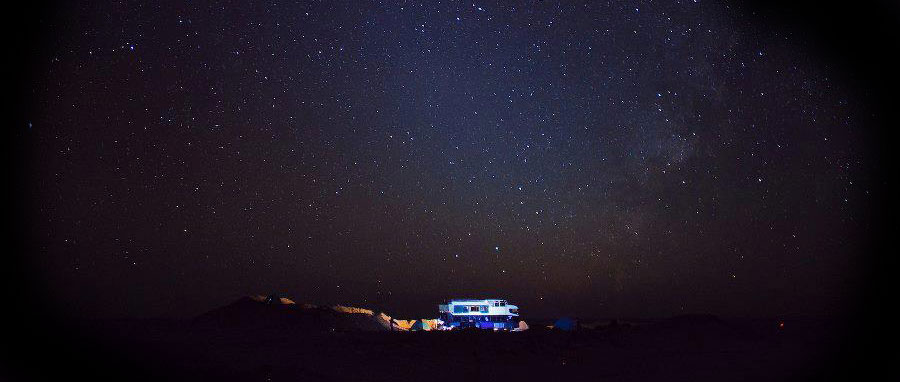
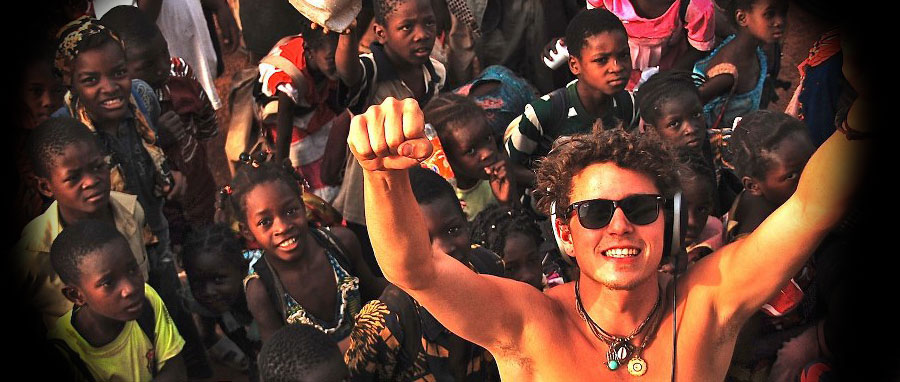
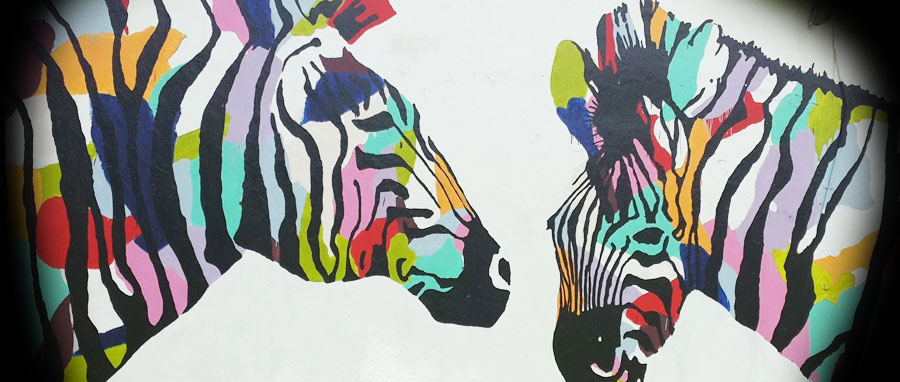
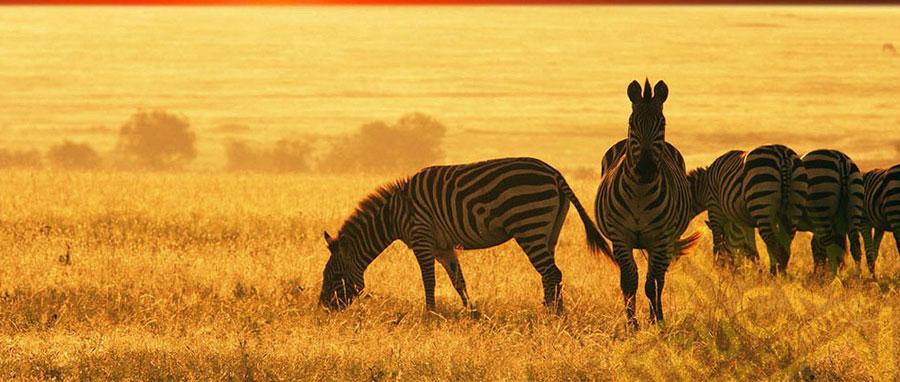

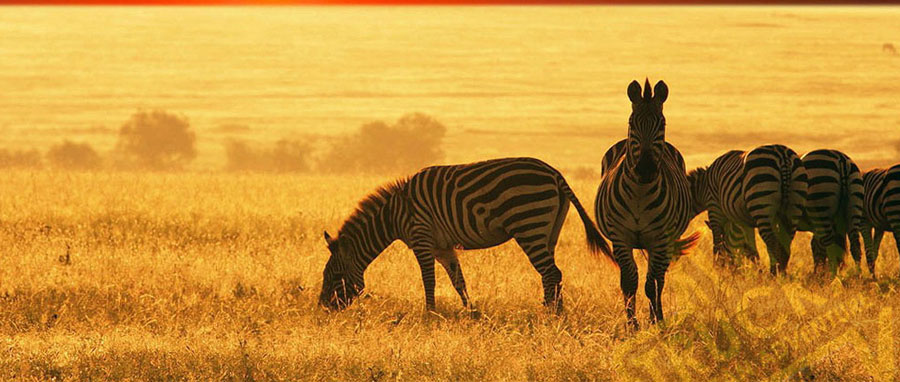
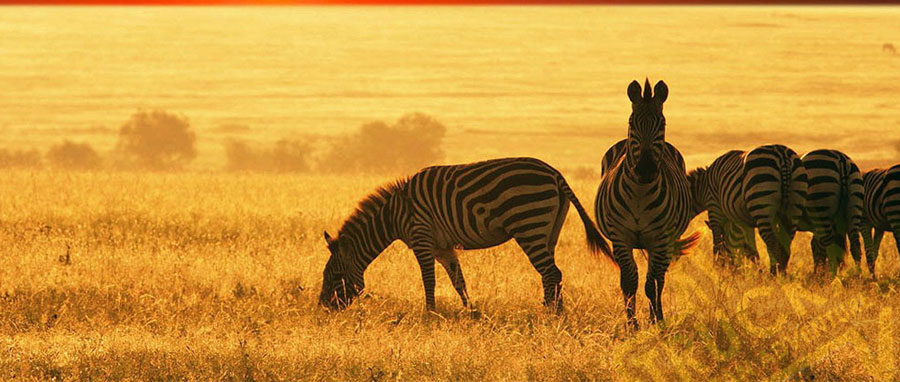
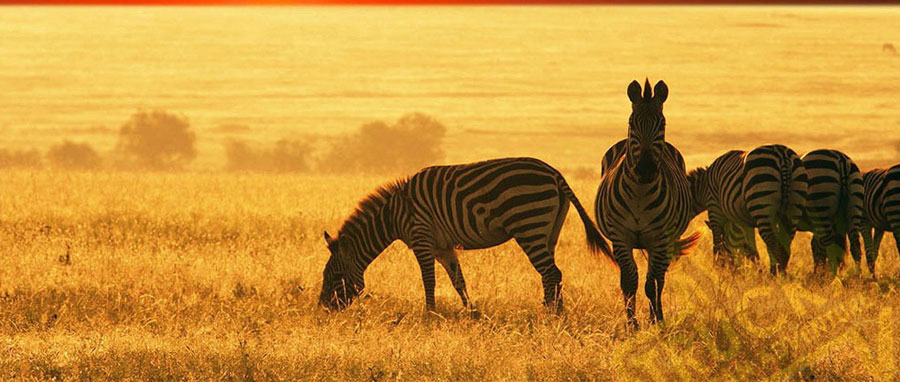
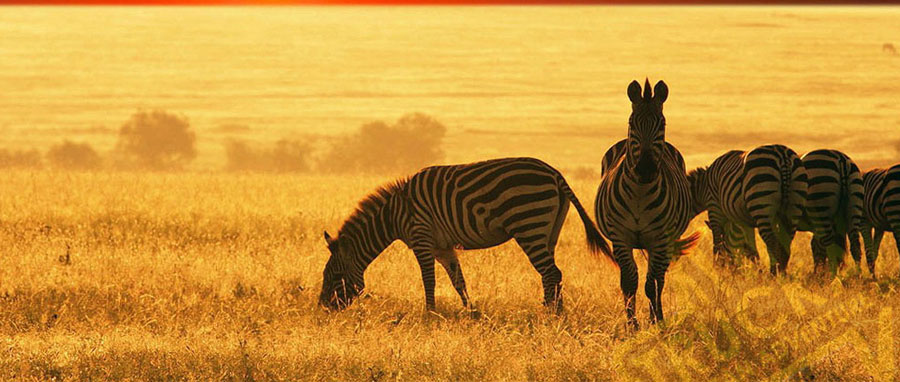



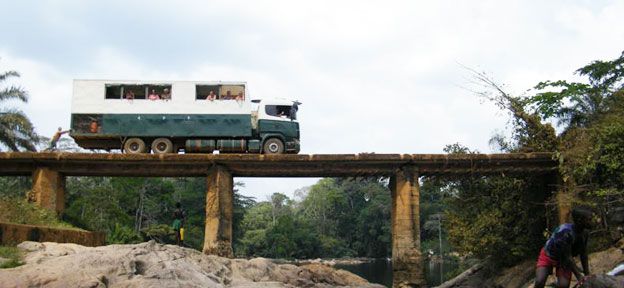
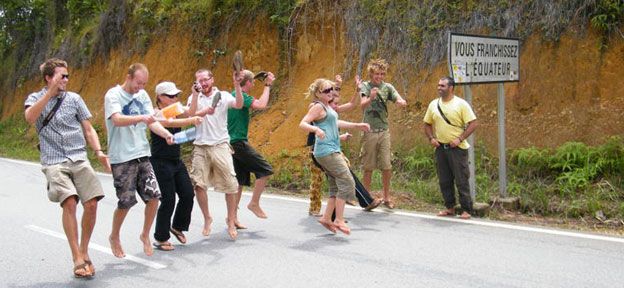
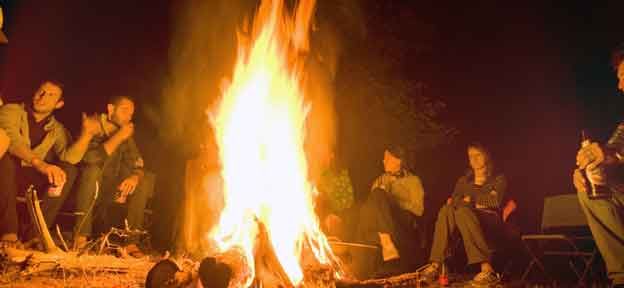
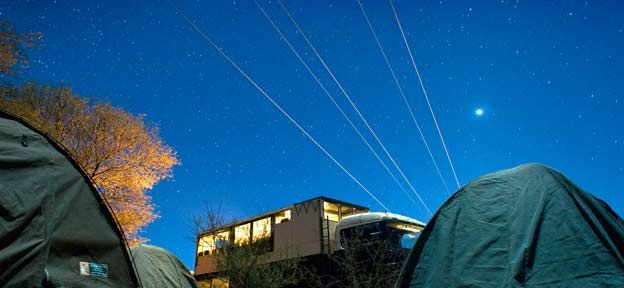
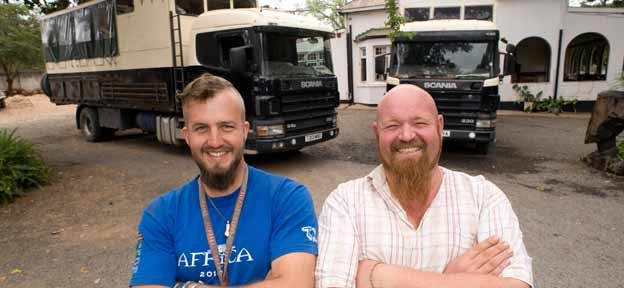
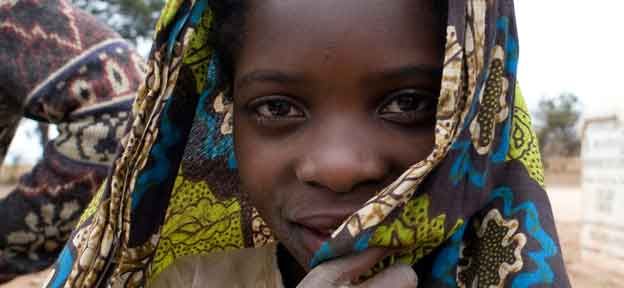
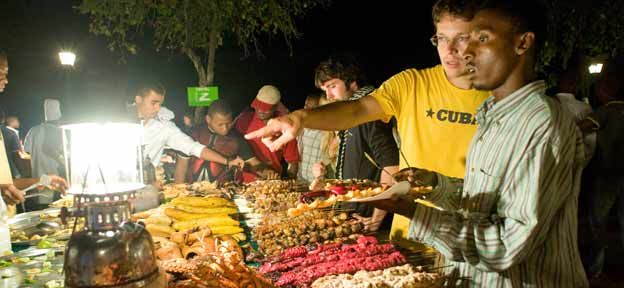
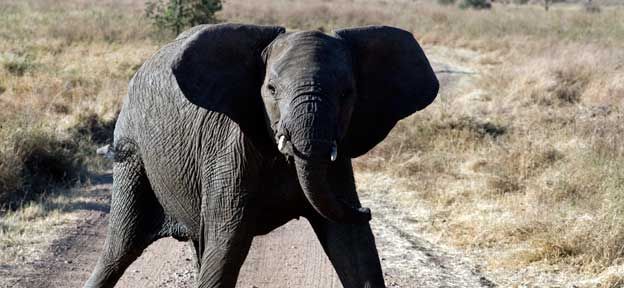
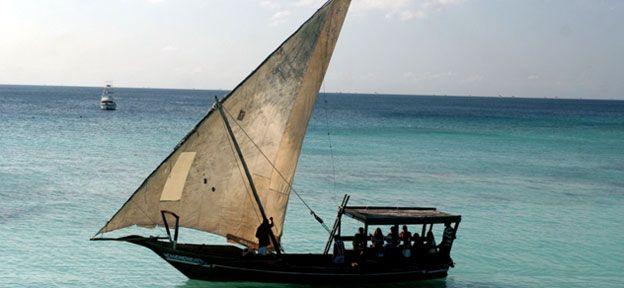
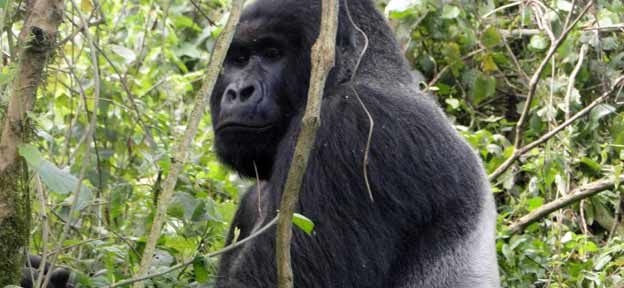
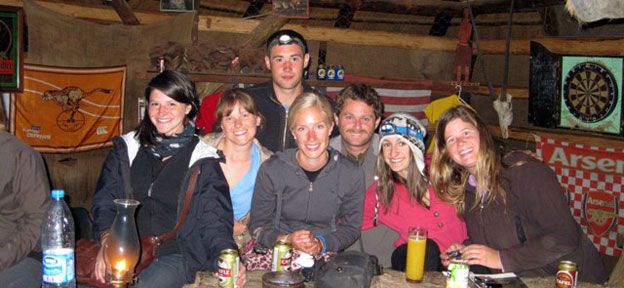
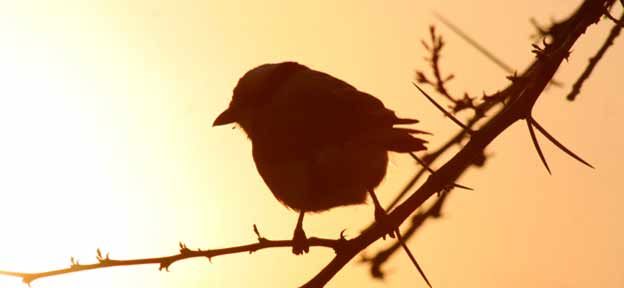
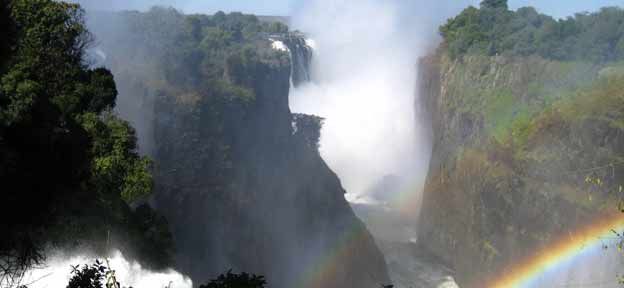
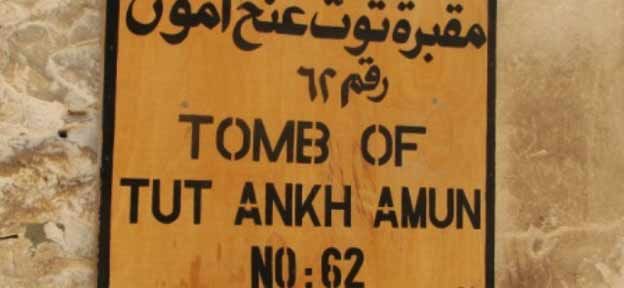
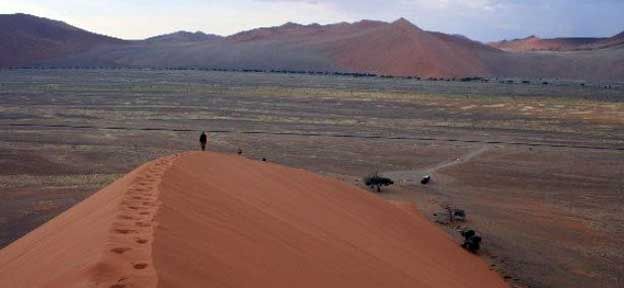
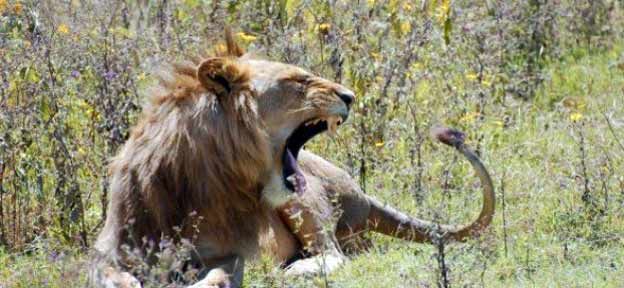
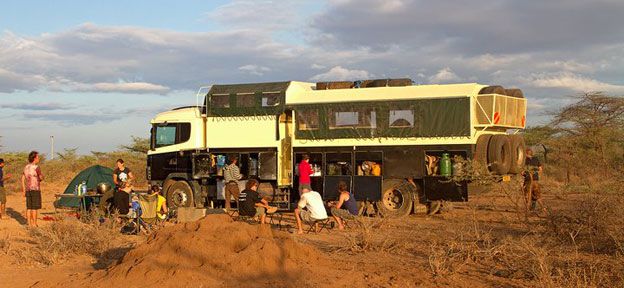
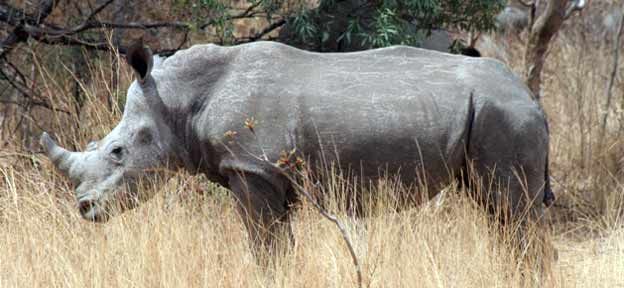
 Print this Page
Print this Page